The US power grid is often hailed as the backbone of modern society; a marvel of technology that keeps our homes lit, our food cold, and our lives comfortable. But the truth? It’s not as invincible as they’d like you to think.
The reality is, there are more vulnerabilities in the power grid than most people realize. And the worst part? Many of those in power aren’t telling the full story.
Whether it’s for reasons of control, preventing panic, or just plain denial, they’re keeping the average American in the dark about just how fragile our electric lifeline really is.
The Common Misconceptions
One of the biggest lies we’ve been told is that the grid is protected against all major threats. The idea that our power infrastructure is resilient enough to handle natural disasters, cyberattacks, and equipment failures all at once is, frankly, laughable.
In reality, the US power grid is more of a patchwork quilt; each piece owned and maintained by different entities, cobbled together with outdated equipment that’s often running decades past its intended lifespan.
Weather Outages
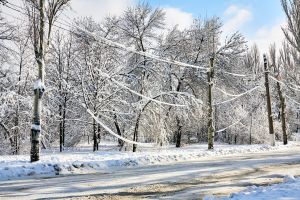 Remember the Texas freeze of 2021? It only took a few days of extreme weather for millions to lose power, and in some cases, lives.
Remember the Texas freeze of 2021? It only took a few days of extreme weather for millions to lose power, and in some cases, lives.
We’re not talking about an isolated incident; the entire country has similar weaknesses. The grid’s vulnerability to extreme weather is just the tip of the iceberg.
Related: 8 Items You Need to Survive a Power Outage This Winter
With each utility company doing its own thing, there’s a shocking lack of coordination and planning. When they tell you that the system is fine, that it’s up to par—they’re feeding you a false sense of security.
Prolonged Outages
Another common misconception is that the power grid is well-prepared for a large-scale, prolonged outage. Many believe that power companies have contingencies in place to restore power quickly, regardless of the scenario.
The truth is, while they may have some contingency plans, the ability to respond to a widespread, long-term blackout is far from adequate.
The grid’s dependency on a vast network of transformers, which are often custom-made and take months to replace, makes rapid recovery nearly impossible. These transformers are the weak links that no one likes to talk about—without them, power restoration becomes a monumental task.
Renewable Energy: Good or Bad?
A further misconception is that renewable energy integration has made the grid more resilient. While solar and wind energy are crucial for reducing carbon emissions, they are also intermittent sources that depend on weather conditions.
Without significant investment in energy storage solutions, relying heavily on renewables can actually make the grid more unstable during peak demand times or extended cloudy and windless periods.
Renewable energy alone is not a magic bullet, and the lack of effective storage solutions makes it challenging to maintain consistent power availability.
Physical Attacks on the Grid
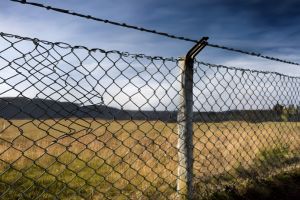 Another myth is that the grid is secure from physical attacks because of increased security measures. The truth is, while some facilities have enhanced their security, many substations remain poorly protected, often surrounded by nothing more than a chain-link fence. It wouldn’t take much more than a determined individual with basic tools to cause severe disruptions.
Another myth is that the grid is secure from physical attacks because of increased security measures. The truth is, while some facilities have enhanced their security, many substations remain poorly protected, often surrounded by nothing more than a chain-link fence. It wouldn’t take much more than a determined individual with basic tools to cause severe disruptions.
The 2013 attack on a power station in California is a prime example of just how vulnerable these critical points are. Despite heightened awareness, not nearly enough has been done to fortify these vulnerable facilities.
Some people also believe that technological advancements have solved most of the grid’s issues, making blackouts less likely. While advancements in smart grid technology have improved monitoring and response times, they have also introduced new vulnerabilities.
Smart grids are highly dependent on interconnected devices and software, making them susceptible to cyberattacks. As more devices connect to the grid, the number of potential access points for hackers also increases, further compromising grid security.
Potential Threats Lurking in the Shadows
The threats are many, and they’re not always the kind that you can see coming. Take electromagnetic pulses (EMPs), for instance. EMPs can occur naturally from solar flares, but they can also be weaponized.
Imagine a high-altitude detonation of an EMP over the US; it would fry transformers, telecommunications, and leave the entire nation in darkness, perhaps for months. The damage would be astronomical.
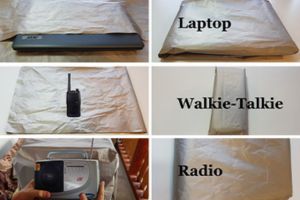 That’s why I’ve added the EMP Proof Cloth to my prepping supplies. It’s an affordable, reliable way to shield essential electronics from the devastating effects of an EMP, providing a crucial layer of protection when everything else fails. This safeguard keeps key devices safe from EMP blasts—one less vulnerability when the grid goes down.
That’s why I’ve added the EMP Proof Cloth to my prepping supplies. It’s an affordable, reliable way to shield essential electronics from the devastating effects of an EMP, providing a crucial layer of protection when everything else fails. This safeguard keeps key devices safe from EMP blasts—one less vulnerability when the grid goes down.
How often do you hear government officials discussing EMPs as a real possibility? Spoiler alert: You don’t. And that’s because they don’t want you to know how ill-prepared we are.
Solar Storms
Solar storms are another real threat that could devastate the grid. The Carrington Event of 1859, the largest geomagnetic storm on record, disrupted telegraph systems worldwide.
If a similar event happened today, it would wreak havoc on our electronic infrastructure, potentially leaving millions without power for months.
Despite knowing this, little has been done to harden the grid against such natural events. Power companies and government agencies prefer to cross their fingers and hope for the best, rather than invest in the infrastructure needed to mitigate these risks.
Cyber Attacks
Cyberattacks are another massive risk. Hackers with the right know-how could bring parts of the power grid to its knees. If you think that’s science fiction, think again.
In 2015, hackers managed to cut power to nearly a quarter-million people in Ukraine. The methods they used were sophisticated, but not beyond the capabilities of those targeting the US.
Our power companies are playing catch-up when it comes to cybersecurity, and the recent rise in ransomware attacks across the globe should have us all on edge.
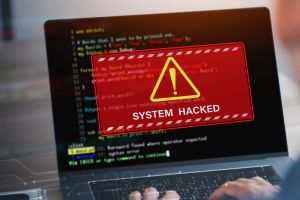 The situation becomes even more alarming when you consider insider threats; individuals who work within the power sector who could intentionally or unintentionally compromise the grid’s security.
The situation becomes even more alarming when you consider insider threats; individuals who work within the power sector who could intentionally or unintentionally compromise the grid’s security.
Related: A Simple Way to Block Your Cellphone from Being Spied On
Whether it’s through negligence, lack of proper training, or deliberate sabotage, insiders have the potential to cause significant disruptions. Many power companies are ill-equipped to detect and mitigate these insider threats, making the grid even more vulnerable.
And let’s not forget physical sabotage. It might sound old-fashioned, but it’s a real threat. A well-coordinated attack on a few key substations could create cascading failures across a wide area. In 2013, an attack on a power station in California nearly took out a critical part of the grid, and they never caught the perpetrators.
It took utility workers 27 days to repair the damage—and that was just one substation. Imagine if several substations were hit simultaneously, most of the country would be plunged into darkness, with no quick fix in sight.
The Real Cost of Grid Failure
A large-scale power outage wouldn’t just mean sitting in the dark for a few days. The cascading effects would be catastrophic.
Without power, water treatment facilities would cease to function, leaving millions without clean water. Food supply chains would be disrupted, and grocery stores would quickly run out of essentials.
Hospitals, despite having backup generators, would struggle to provide care as fuel supplies dwindle. Communication systems would break down, leaving people isolated and in the dark—both literally and figuratively.
Economic Impact of Outages
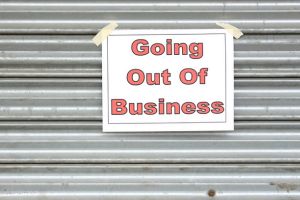 The economic impact would be devastating as well.
The economic impact would be devastating as well.
Businesses would be forced to close, leading to massive job losses.
The financial markets would be thrown into chaos, and the resulting instability could take years to recover from.
The interconnected nature of modern society means that failure in one sector can quickly spread to others, creating a domino effect that would be nearly impossible to stop.
And then there’s the human toll. In the event of a prolonged outage, people would face significant hardships—lack of access to medical care, food, and clean water would lead to increased illness and mortality.
Crime rates would likely spike as people become desperate, and without a functioning communication network, law enforcement would struggle to maintain order. The societal fabric we take for granted could unravel in a matter of weeks.
How You Can Protect Yourself
It’s time to face the reality that the government and power companies might not be able to save us if the grid goes down. So, how can you protect yourself? It’s all about preparation and self-reliance.
This Modular Backyard Power Plant is perfect if you want a reliable power source in your backyard 24/7. The guide shows you how to build your own backyard power plant with detailed, step-by-step instructions, illustrations, and videos.
You’ll get a complete list of all the materials you need and where to find them, so there’s no guessing. It’s like putting together furniture from Ikea. With this guide, you won’t have to rely on power companies for your food, health, and home security.
Stock Up Before the Power Goes Out
Stock up on essentials like non-perishable food, water, and basic medical supplies. In a long-term grid-down scenario, stores will quickly run out of supplies, and logistics chains will be broken.
Consider learning about off-grid cooking methods, like using a solar oven or rocket stove, and make sure you have a way to purify water. A good water filter or water purification tablets can be lifesavers if access to clean water becomes limited.
It’s also smart to think about communication. When the grid fails, so does the internet and cell service. Having a ham radio can help you stay in touch with others, even when conventional communications are down.
Ham radios are relatively inexpensive and can be operated without relying on the power grid. Learning how to use a ham radio and obtaining a license could be crucial for staying informed and connected during a prolonged outage.
Learn the Basics
Learning basic survival skills, like first aid and fire-starting, can make all the difference when the lights go out, and no one’s coming to help.
Take the time to build a comprehensive emergency kit, including items like flashlights, batteries, blankets, and tools. Make sure every member of your household knows how to use these items and understands the plan for what to do in the event of a power failure.
For those with the means, consider investing in renewable energy solutions for your home. Solar panels, wind turbines, and even micro-hydro systems can provide a measure of independence from the grid.
While these systems require an upfront investment, they can pay off in the long run, especially if the grid becomes increasingly unreliable.
The Bottom Line
The truth is, they’re lying to you about the power grid’s resilience. It’s time to wake up and see the grid for what it really is: a fragile, overburdened system that’s ripe for failure.
By preparing now, you can ensure that you and your loved ones aren’t left vulnerable when the inevitable happens.
Because when the grid goes down, you won’t want to be among those realizing too late that they should have listened to the warnings.
Stay informed, stay prepared, and don’t let them keep you in the dark.
You may also like:
70+ Projects to Survive a World Without Electricity (Video)
The Best States to Outlive an Economic Depression

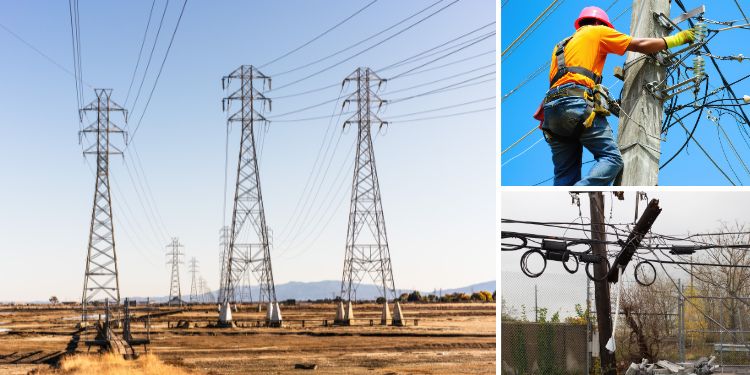
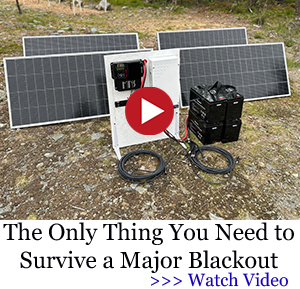





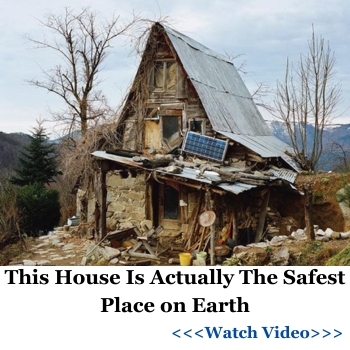







Can you put an emp cloth on a propane generator while it is working?
I would build a frame around it, treated 2×4 with something cheap and easy like hardware cloth for the top and sides, then cover completely with EMP cloth. Since it has a connection to the house wiring you need a very fast surge protector protecting the house wiring from the utility supply line. EMP builds up a destructive surge in power lines. Unclear if it will also build up a charge in isolated conductors like the wires from one outlet to the next.
The grids are incredibly complex systems and will always be vulnerable. The Texas Grid Operator, ERCOT, was controlling the situation during the big freeze with rolling blackouts but one of the big Permian Basin suppliers mistakenly cut power to the gas wells that supply the gas powered generators so all emergency backup generation went down. Doh! Since we were Prepared we spent the whole week w/o power partying while 300 died.
Short answer – NO!
Reason – generator must be able to breathe, expel exhaust, and get rid of heat.
ANY portion of the generator exposed, even something plugged into it, allows EMP in.
If it is running then you have something plugged in.
I do not know of any extension cords that are EMP proof.
There would be an initial EMP that does the most damage but the EMP is not finished for up to 10 days.
It works like a loud volume on high then turning the volume down slowly over 10 days to zero.
Works like volume but is not sound.
If you want to test your idea, try it but put your cell phone under the EMP blanket. No need to run the generator at this time.
Call it. If it rings, you have quick answer. If not, you still may be vulnerable.
Cell phone frequencies are lower in the spectrum than an EMP and FAR FAR less powerful than an EMP.
The reason for our antiquated power grid is CORPORATE GREED.
Instead of keeping up with tech, CEO’s opt for THEIR bottom line.
Another problem is that our population exploded in the past 70 years with power hungry tech expanding as well.
If we only had the number of people we had say back in the 1940’s, power grid issues would be significantly less.
Odd they do not tap into those wires with filter capacitors to shunt any EMP.
Even a 1:1 isolation transformer can mitigate a lot of the problems.
If it’s a patchwork, then that is excellent. That means that the fragility is here and there, and not everywhere, and that outages and the effects of sabotage will not take down the whole of a huge, centralized system. How one can, in any accurate way, blanket assess the condition of a huge number of independent systems escapes me.
Because of the cascade effect. Also called the Domino effect by some. As each area fails the load the next area sees increases. Very quickly the load escalates to the point that it becomes too much load for the next sector to handle. Then a very large area goes black. Steven Starr’s book, Nuclear High Altitude Electromagnetic Pulse talks a lot about how pulses and outages affect the system. To cut to the chase, if ANY of the large up or down transformers are damaged, nobody has spares. Most are not made in the USA nowadays. The medium and larger sizes cant be transported by rail. Too heavy. Come in at a seaport, get loaded on a specialized heavy haul that is oversize, overweight, etc. Unless said transformer is sitting RIGHT NEXT TO the failed one AND the specially trained crew is right there handy, it’ll be months or possibly longer b4 replacement occurs. Highly likely that, in the case of an EMP anyway, so many insulators will be damaged that the condition of the transformer will be irrelevant.
We’ve had a generator for several years. Last year we put in a wood heating stove, and this year we finally bought a power station to manage the power. Our next goal is to purchase solar panels for added energy security.
How about , just do it old school, latern. Emp dosent affect an old kerosene latern
people think “green energy” doesn’t pollute our air? Really, where do people think that the power comes from? I can tell you where it doesn’t come from. It does NOT come from the Sun nor does it come from the wind. So where does it come from? Batteries (very expensive batteries) that is where it comes from. And where are those batteries made? India and Red China that’s where. But that’s all the way over there it is polluting THEIR AIR not ours right? Afterall air can tell the difference between Unites States air and Asian air. So we don’t have anything to worry about.
How much does EMP cloth cost per yard?